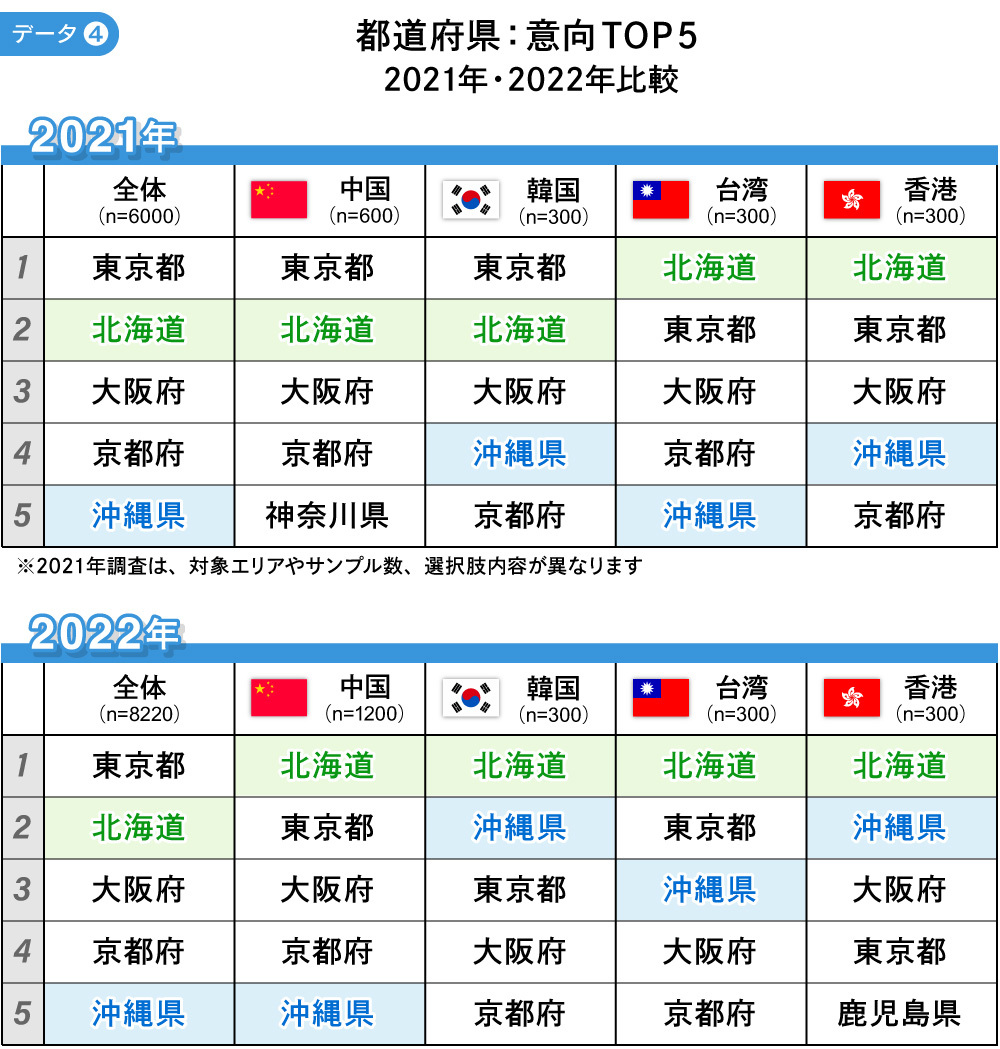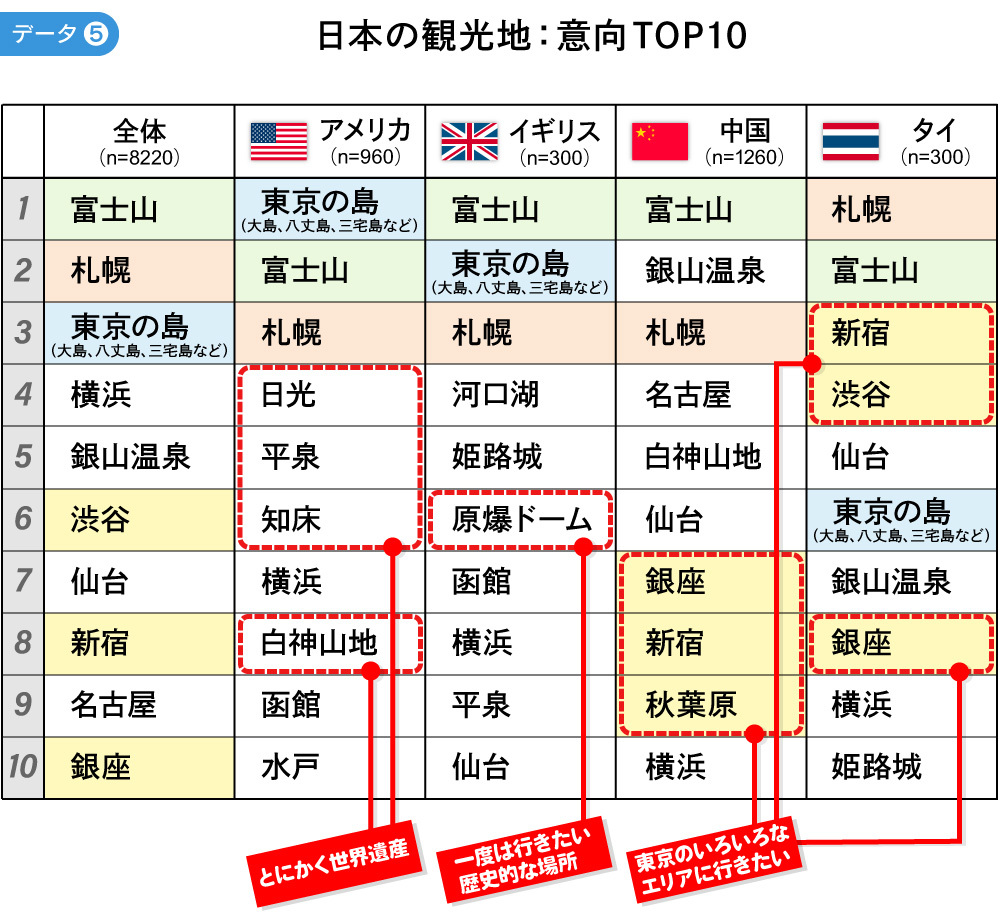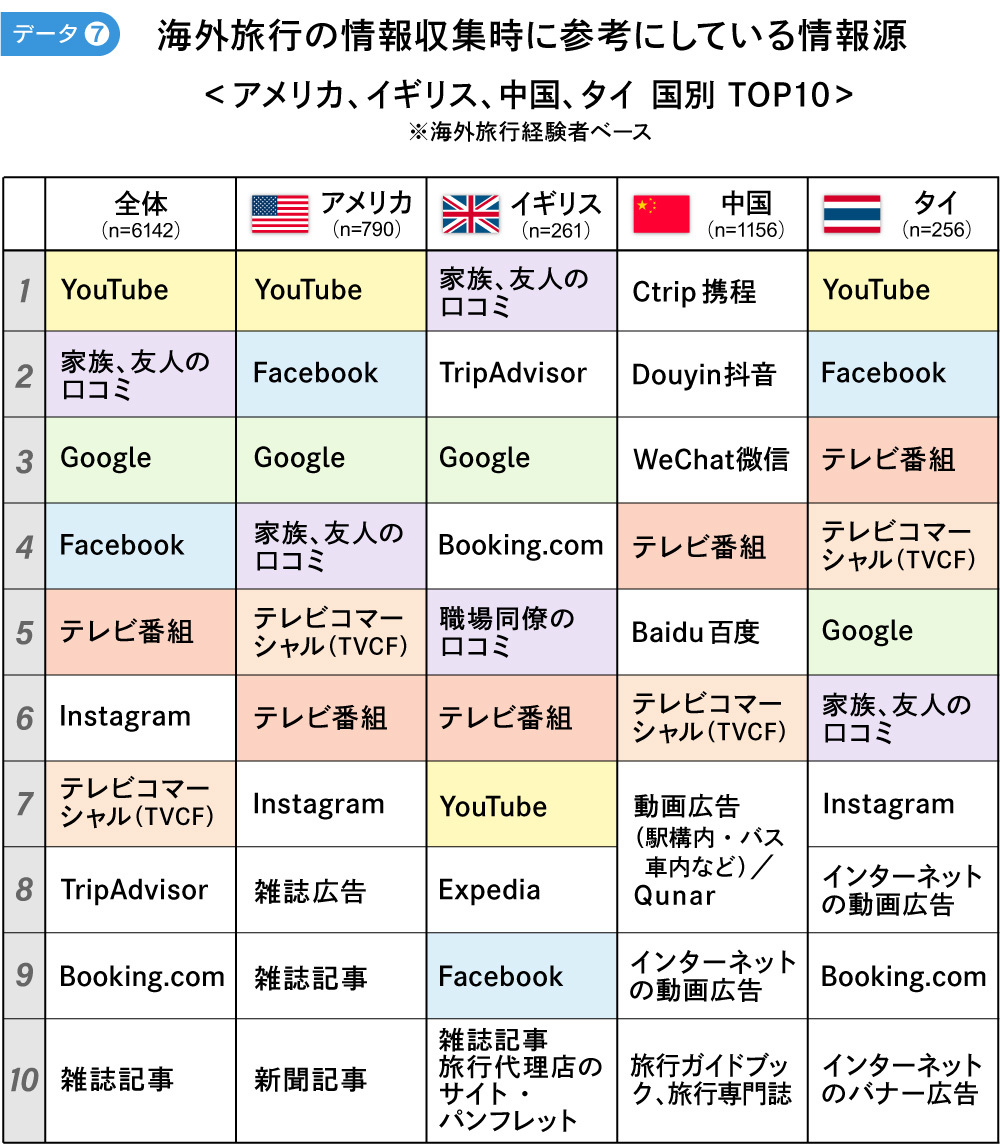How has the Japan brand fared after the COVID-19 pandemic?
What kind of business opportunities are likely to emerge in the future?
This series explores the current state of the Japan brand and Japan's future potential by examining the latest data from Dentsu Inc.'s proprietary "Japan Brand Survey" ( overview here ), which underwent a major renewal in 2022 and targets high- and middle-income consumers overseas.
Last time, we discussed the global momentum for overseas travel and Japan's rising popularity as a destination. This time, based on the Japan Brand Survey results, we will consider what is needed to actually bring visitors to Japan and strategies to recover Japan's future inbound tourism.
What do they want to do in Japan? ~ A shift towards "nature" and increasingly segmented needs by country/region
In the previous article, we noted the rising interest in "nature" experiences as a priority for overseas travel. Similarly, when asked about "experiences they are interested in having in Japan," three nature-related items dominated the top three: "Nature/scenic spot sightseeing (forests, valleys, rivers, seaside, etc.)," "Experiencing the four seasons," and "Nature/scenic spot sightseeing (Japanese-style gardens)" (Data ①).
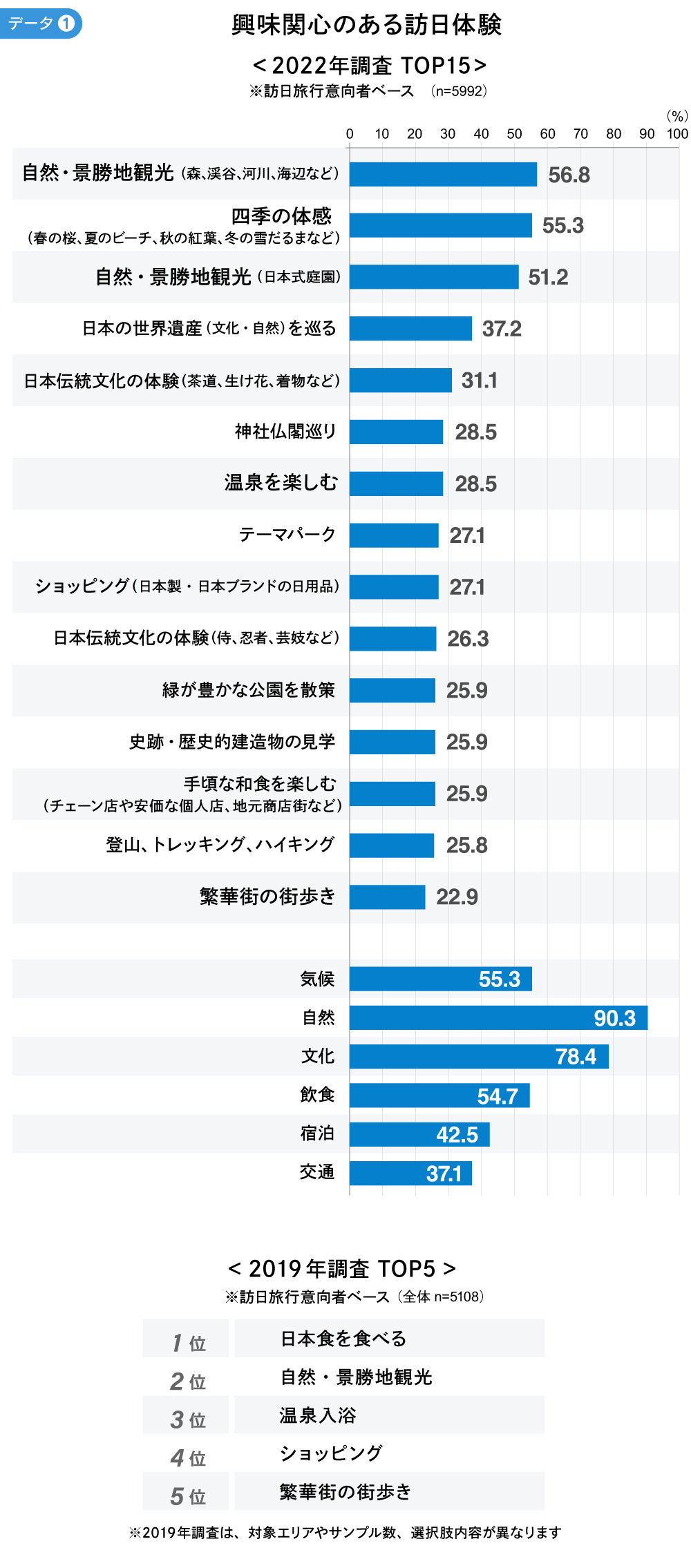
"Food," which topped the list in the pre-COVID survey (2019), did not fare well in this survey. "Hot springs," previously in the top three, and "strolling through downtown areas," which ranked highly, also dropped in position. Possibly due to the pandemic's impact, items associated with crowds or close contact with others showed a declining trend in popularity. As discussed later, "hot springs" remain popular in Asia, where concerns about COVID-19 are high. Therefore, rather than rejecting the experience itself, it is necessary to consider phrasing that acknowledges the negative feelings toward contact with large, unspecified groups of people caused by the pandemic.
Next, let's examine the results for the top countries sending visitors to Japan in each region: the United States, the United Kingdom, China, and Thailand (Data ②). While items related to "nature" occupy the top three spots and unique, valuable "World Heritage Sites" rank highly across all regions, other items show distinct differences by country.
While broadly categorized as "Western," preferences vary: Americans favor seeing quintessentially Japanese structures like historical sites and shrines/temples, along with nature-based activities like trekking and camping. Britons show higher demand for traditional cultural experiences and food. Meanwhile, within "Asia," differences emerge: while China and Thailand share common interests like hot springs and shopping, China shows higher demand for entertainment-focused experiences like traditional cultural activities and theme parks, while Thailand sees greater interest in seasonal experiences like fruit picking.
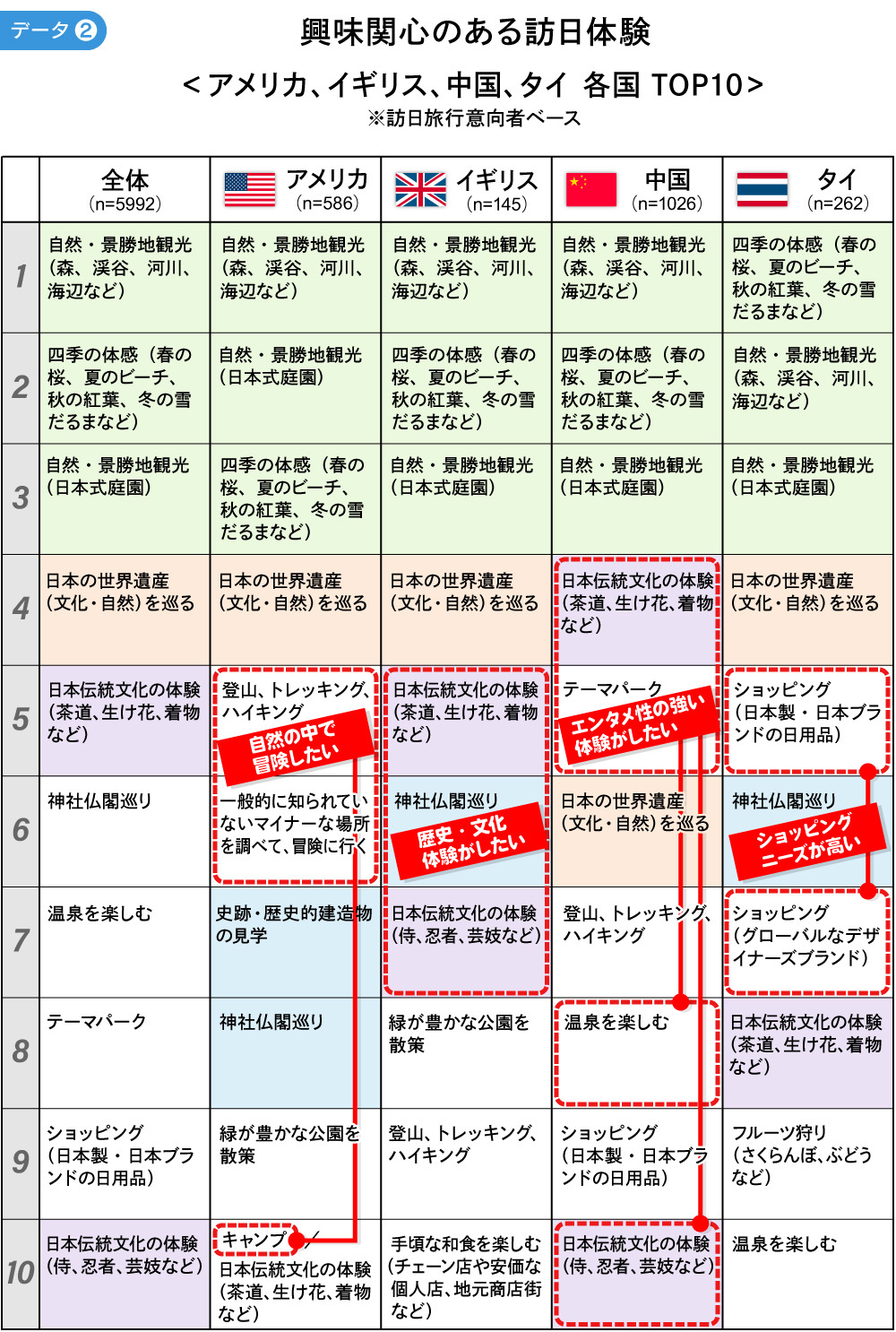
To effectively stimulate desire and drive actual visits, particularly in Europe and America where the psychological and physical distance from Japan is greater, it's crucial to adopt a meticulous approach. This involves not only addressing top-level needs for the Japan experience but also tailoring communication to alleviate COVID-19 concerns, while carefully considering the nuanced differences in demand across these specific countries and regions.
Where in Japan do you want to go? ~ Destinations that offer broader horizons and deeper experiences
So, where specifically do international visitors want to go in Japan?
Does the growing interest in "nature" influence their destination choices?
First, examining awareness, experience, and intent by prefecture reveals that "Tokyo" consistently ranks top across all categories, followed by "Hokkaido," "Osaka," "Kyoto," and "Okinawa" (Data ③).
Tokyo's top ranking has been a consistent trend since the survey began, showing no change even after the COVID-19 pandemic. Meanwhile, recent surveys showed a growing trend of popularity for Hokkaido, especially among repeat visitors from East Asia. The 2022 survey revealed an accelerated rise in Hokkaido's popularity, with Okinawa also gaining traction (Data ④). This is likely influenced by the still-significant COVID-related concerns prevalent in East Asia.
Next, focusing more specifically on desired "tourist destinations," the top three were "Mount Fuji," "Sapporo," and "Tokyo's Islands (Oshima, Hachijojima, Miyakejima, etc.)" (Data ⑤). It might be somewhat surprising that "Tokyo Islands" ranked alongside Japan's iconic symbol "Mount Fuji" and the popular Hokkaido city "Sapporo." This likely reflects interest in the gap between the urban and natural images, coupled with a growing desire for "nature" experiences.
Looking at trends by country, areas with World Heritage sites are popular in the US, while in the UK, historical sites like the Atomic Bomb Dome and historical structures like Himeji Castle are favored, suggesting a general interest in regional destinations.
Conversely, in China and Thailand, multiple Tokyo areas like "Ginza" and "Shinjuku" made the list, reflecting a desire to revisit familiar places (Tokyo) previously visited.
The impact of the pandemic has broadened travel to areas rich in nature and unique local experiences. Simultaneously, there exists a desire to deeply experience places already visited, suggesting that the nature of travel to Japan will become more segmented.
What brings people to Japan? YouTube dominates overwhelmingly. Alongside personal word-of-mouth, "authentic experiences" are prioritized.
Overseas travel is becoming more active, and countries are launching promotions to attract international tourists. Finally, let's consider specific methods.
The top three sources people reference when gathering information for overseas travel (※China surveyed separately with unique options) were "YouTube," "Word of mouth from family and friends," and "Google" (Data ⑥). Other high-ranking items included social media platforms like "Facebook" and "Instagram."
These results suggest that consumers, having experienced the value of travel during the pandemic, increasingly prioritize "real" information—such as experiences shared on YouTube and social media, and word-of-mouth from people they know—when evaluating whether a destination is worth visiting.
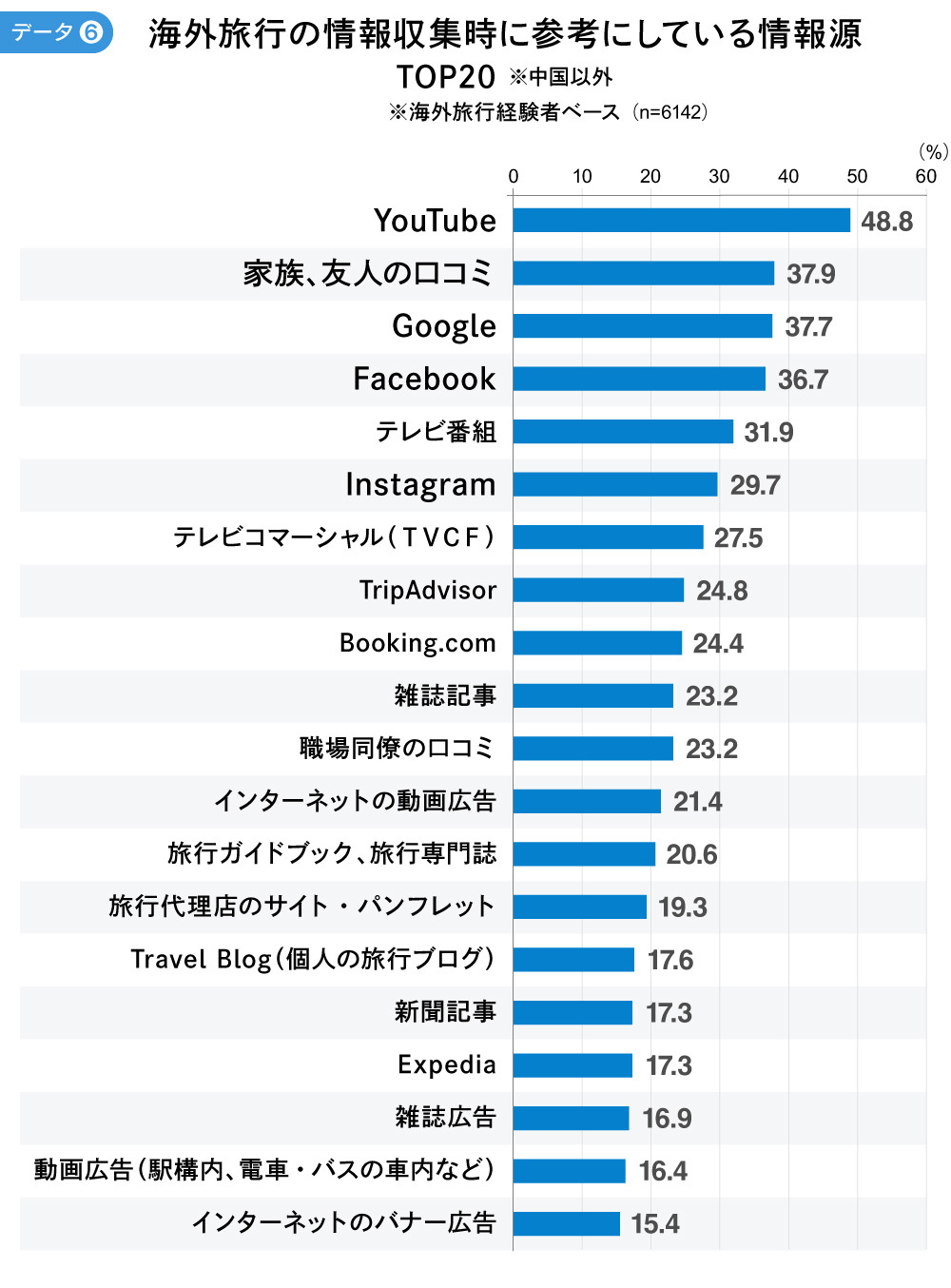
Moreover, information sources, like travel needs, show distinct characteristics by country/region (Data ⑦).
Comparing four countries with high numbers of visitors to Japan reveals that print media holds significant influence in the US, real-world word-of-mouth in the UK, video content in China, and online advertising in Thailand.
By incorporating not only reach efficiency but also these country-specific effective methods, it is possible to achieve approaches with the power to move people.
The survey results reveal signs of change in inbound travel post-pandemic, driven by the broad need for "nature," the "segmentation" of needs by country/region, and the diversification of travel patterns through both "breadth" and "depth."
Some experts hold a positive outlook, predicting that once individual travel restrictions are lifted, tourists from Southeast Asia, the US, and Australia will recover quickly. Rather than viewing this as mere recovery, it's crucial to see it as an opportunity for greater growth. This requires adopting a different approach, one that accounts for the changes brought about by COVID-19. We hope this article provides useful insights for that purpose.
Through Parts 1 and 2, we explored hints for enhancing Japan's business opportunities with the theme of "inbound tourism." Next time, we will examine Japan's future potential under the theme of "Japanese products."
【Contact for Inquiries Regarding This Matter】
Dentsu Inc. Japan Brand Research Project Secretariat
japanbrand@dentsu.co.jp
【About the Dentsu Inc. Japan Brand Survey】
Dentsu's proprietary survey launched in 2011 to understand how the Japan brand was perceived globally when reputational damage occurred to Japanese agricultural and marine products and inbound travel following the Great East Japan Earthquake. Led by Dentsu Team Cool Japan and the Public Account Center, it underwent a major renewal in 2022 with changes to target areas and survey content.
【Dentsu Inc. Japan Brand Survey 2022 Overview】
・Target Areas: 22 countries/regions (United States, Canada, China, South Korea, Taiwan, Hong Kong, Singapore, Thailand, Malaysia, Indonesia, Vietnam, Philippines, India, Australia, Saudi Arabia, United Kingdom, France, Germany, Italy, Spain, Russia, Finland)
・Respondent Criteria: Middle-to-high income individuals, men and women aged 20s to 50s
・Sample Size: 8,220 people (United States = 960, China = 1,260, Other countries/regions = 300)
・Survey Method: Online survey
・Survey Period: December 2021 - January 2022




